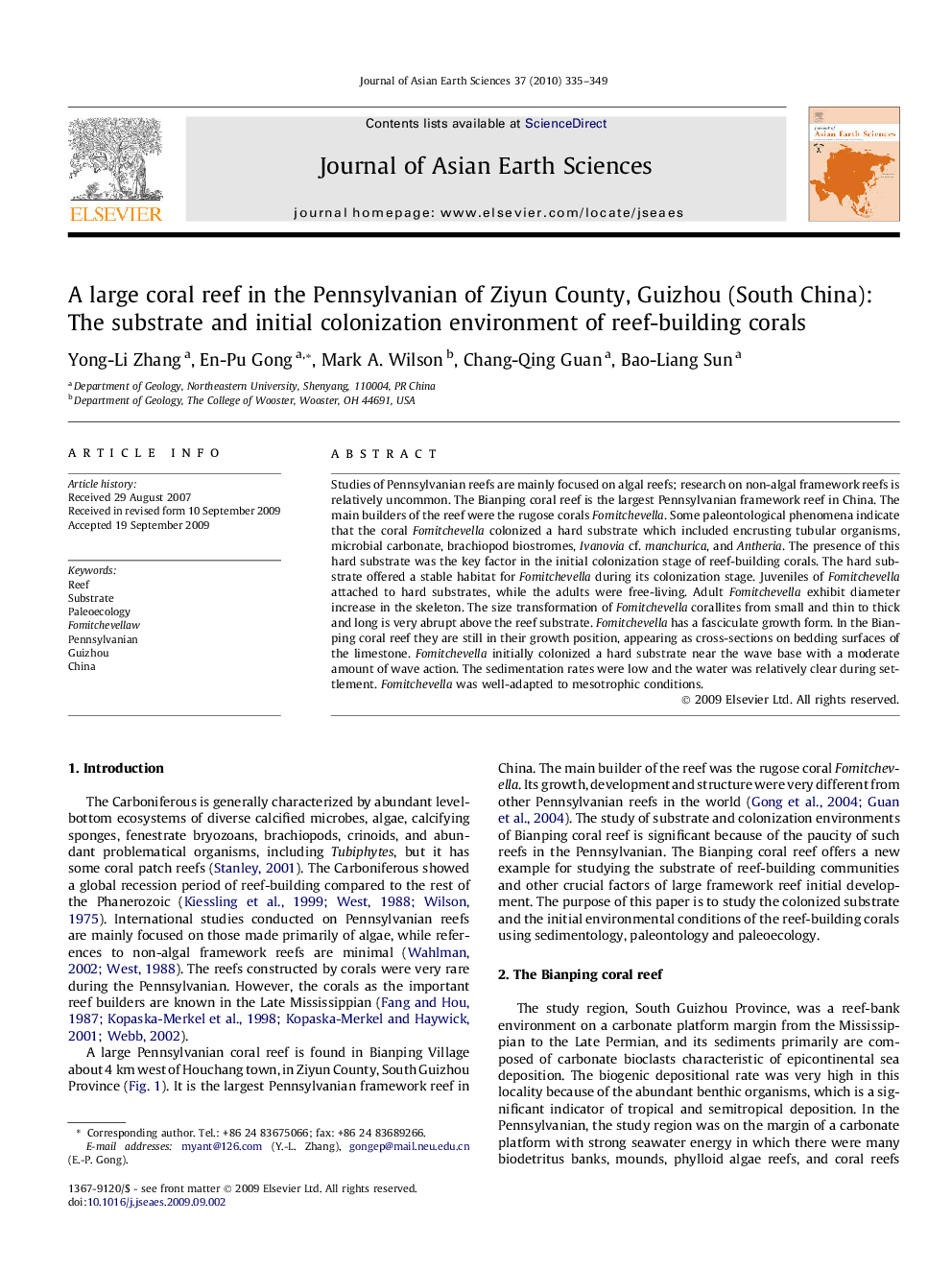| Article ID | Journal | Published Year | Pages | File Type |
|---|---|---|---|---|
| 4731995 | Journal of Asian Earth Sciences | 2010 | 15 Pages |
Abstract
Studies of Pennsylvanian reefs are mainly focused on algal reefs; research on non-algal framework reefs is relatively uncommon. The Bianping coral reef is the largest Pennsylvanian framework reef in China. The main builders of the reef were the rugose corals Fomitchevella. Some paleontological phenomena indicate that the coral Fomitchevella colonized a hard substrate which included encrusting tubular organisms, microbial carbonate, brachiopod biostromes, Ivanovia cf. manchurica, and Antheria. The presence of this hard substrate was the key factor in the initial colonization stage of reef-building corals. The hard substrate offered a stable habitat for Fomitchevella during its colonization stage. Juveniles of Fomitchevella attached to hard substrates, while the adults were free-living. Adult Fomitchevella exhibit diameter increase in the skeleton. The size transformation of Fomitchevella corallites from small and thin to thick and long is very abrupt above the reef substrate. Fomitchevella has a fasciculate growth form. In the Bianping coral reef they are still in their growth position, appearing as cross-sections on bedding surfaces of the limestone. Fomitchevella initially colonized a hard substrate near the wave base with a moderate amount of wave action. The sedimentation rates were low and the water was relatively clear during settlement. Fomitchevella was well-adapted to mesotrophic conditions.
Related Topics
Physical Sciences and Engineering
Earth and Planetary Sciences
Geology
Authors
Yong-Li Zhang, En-Pu Gong, Mark A. Wilson, Chang-Qing Guan, Bao-Liang Sun,
